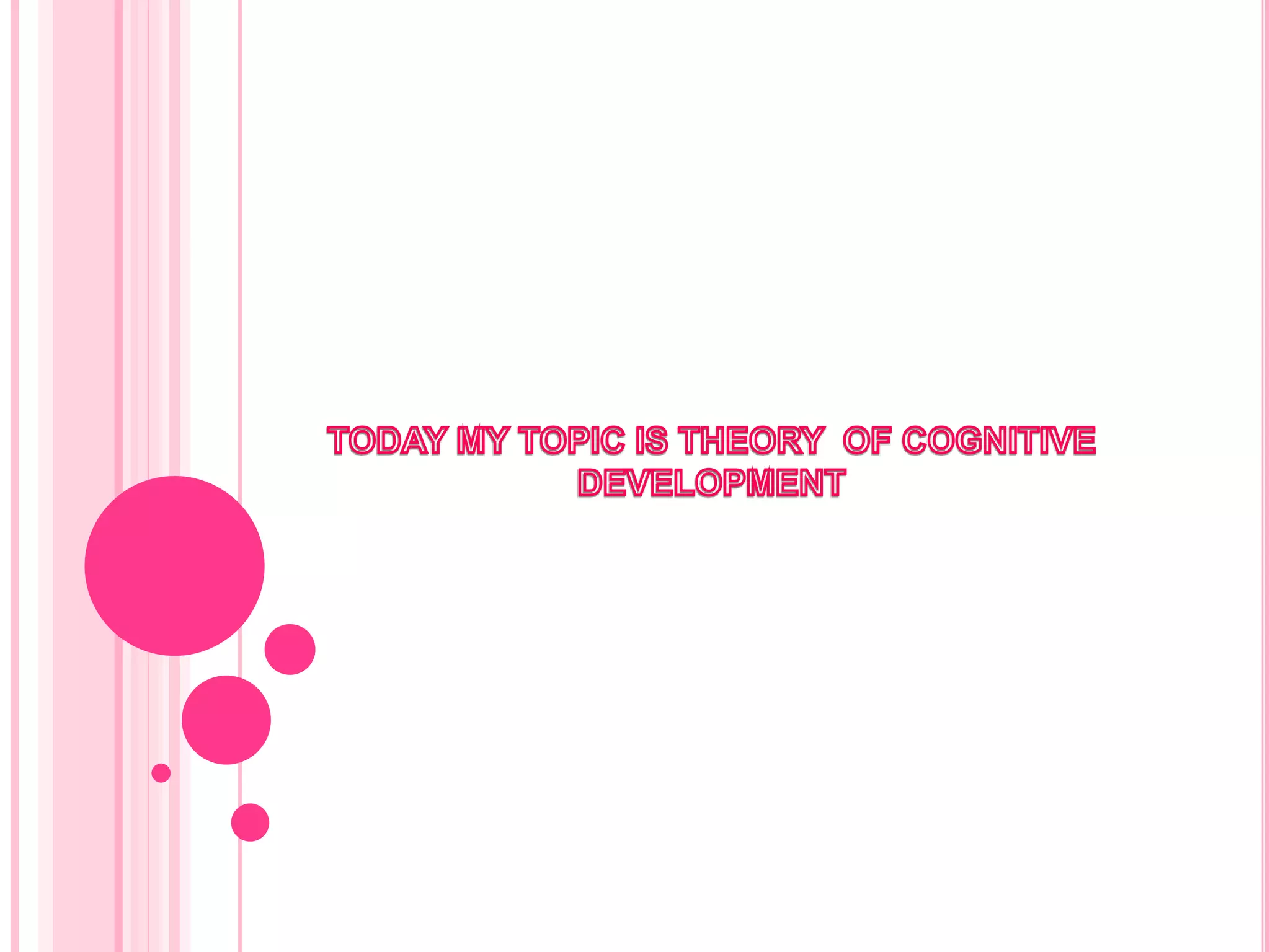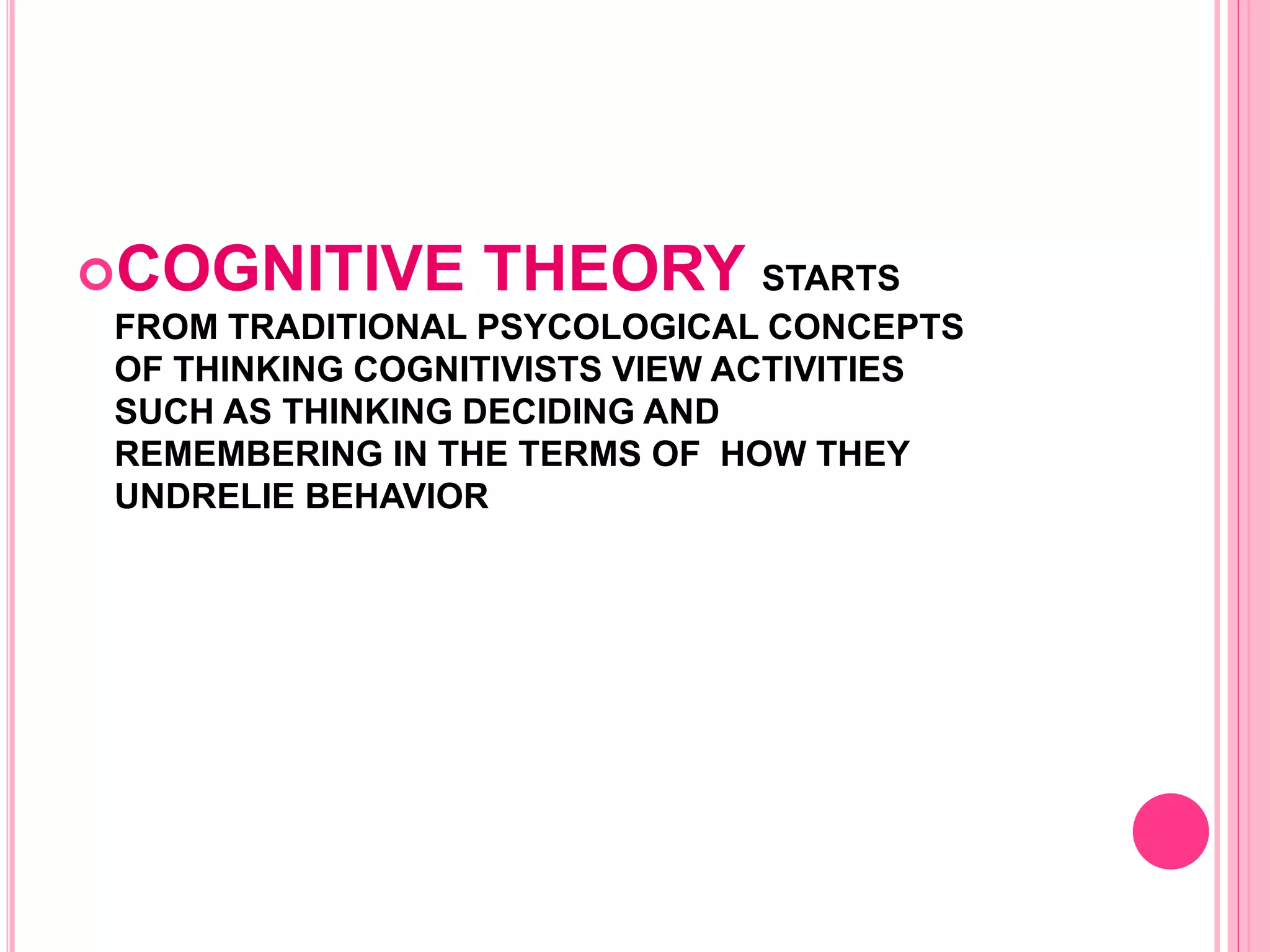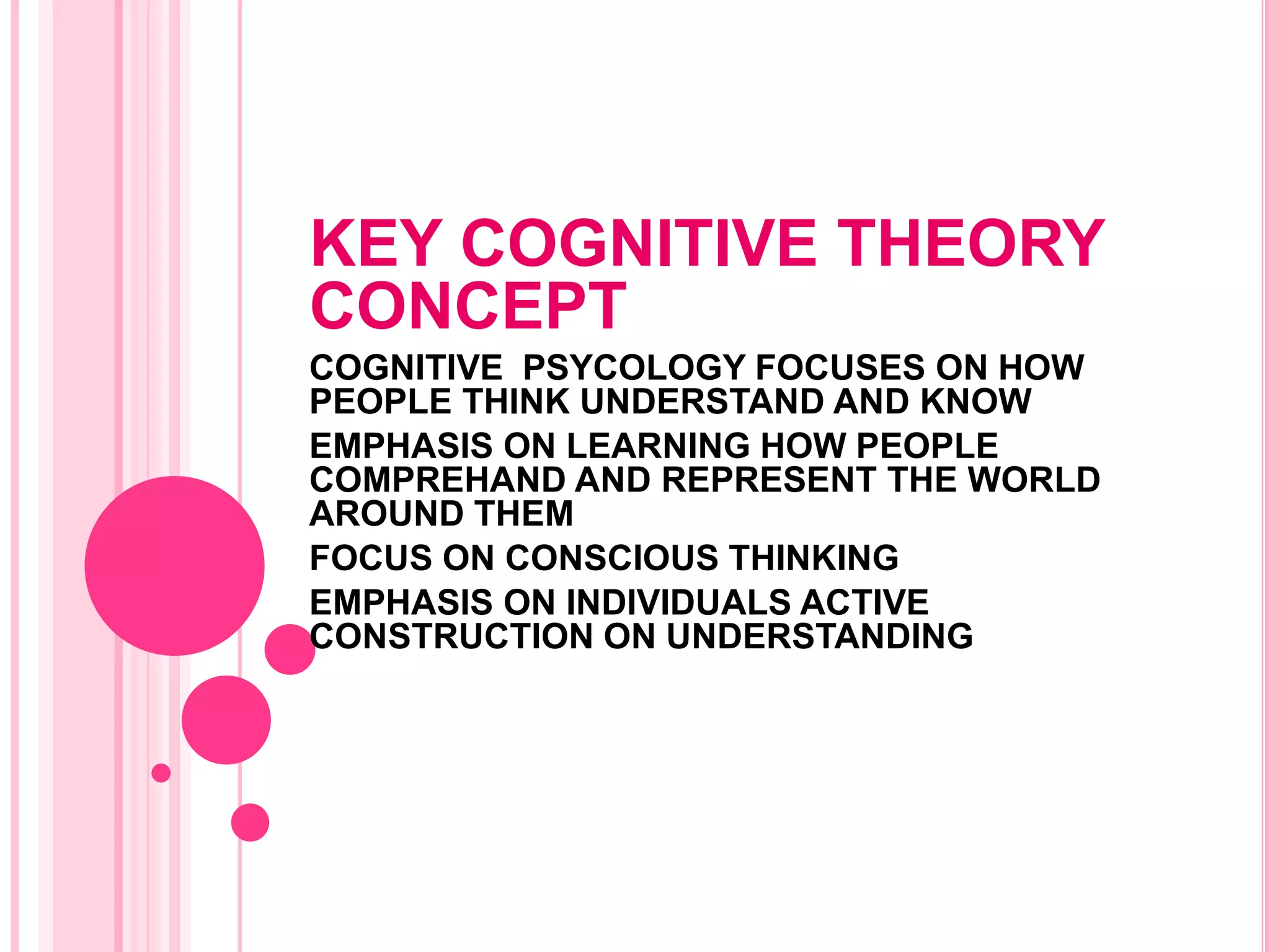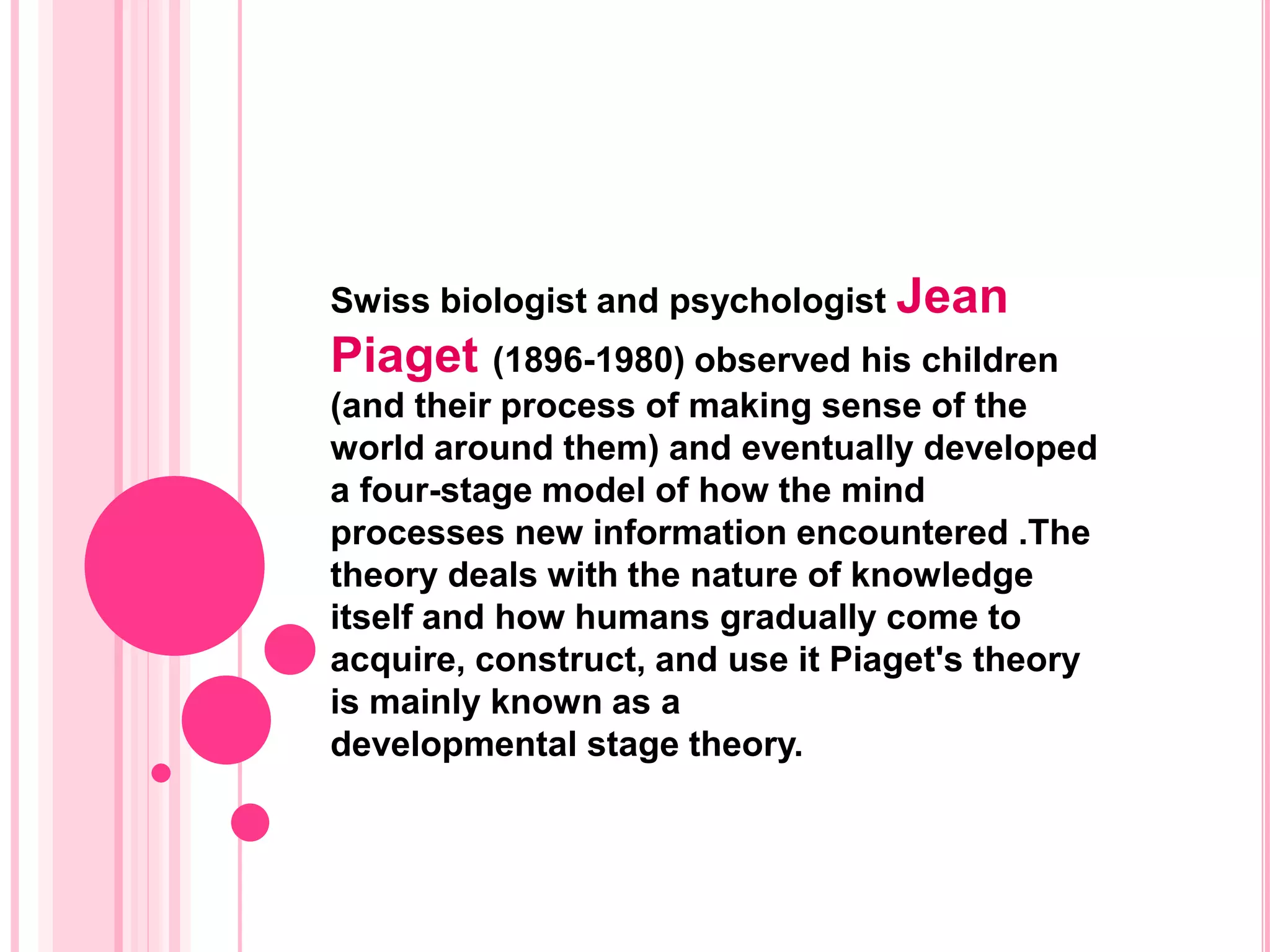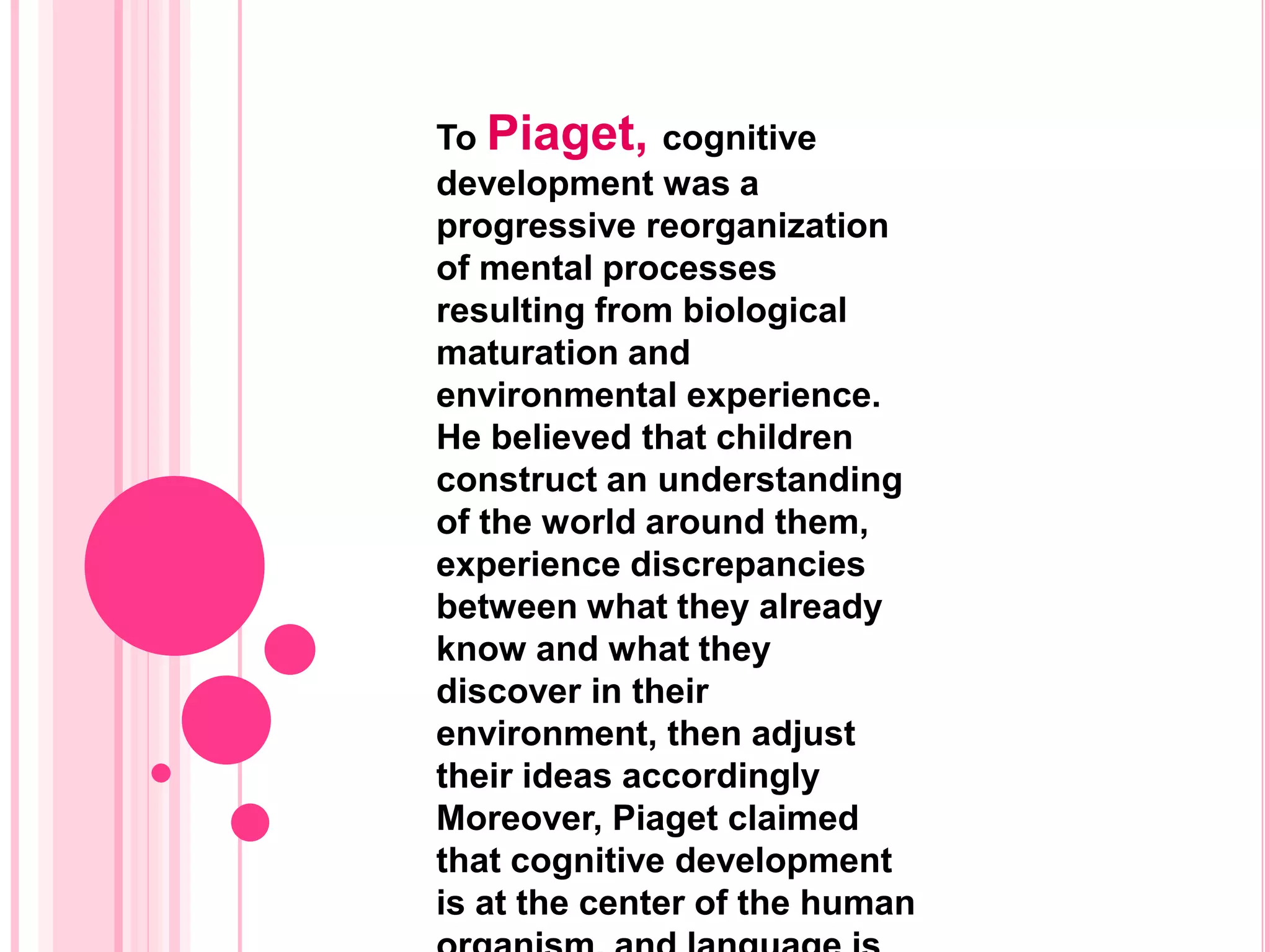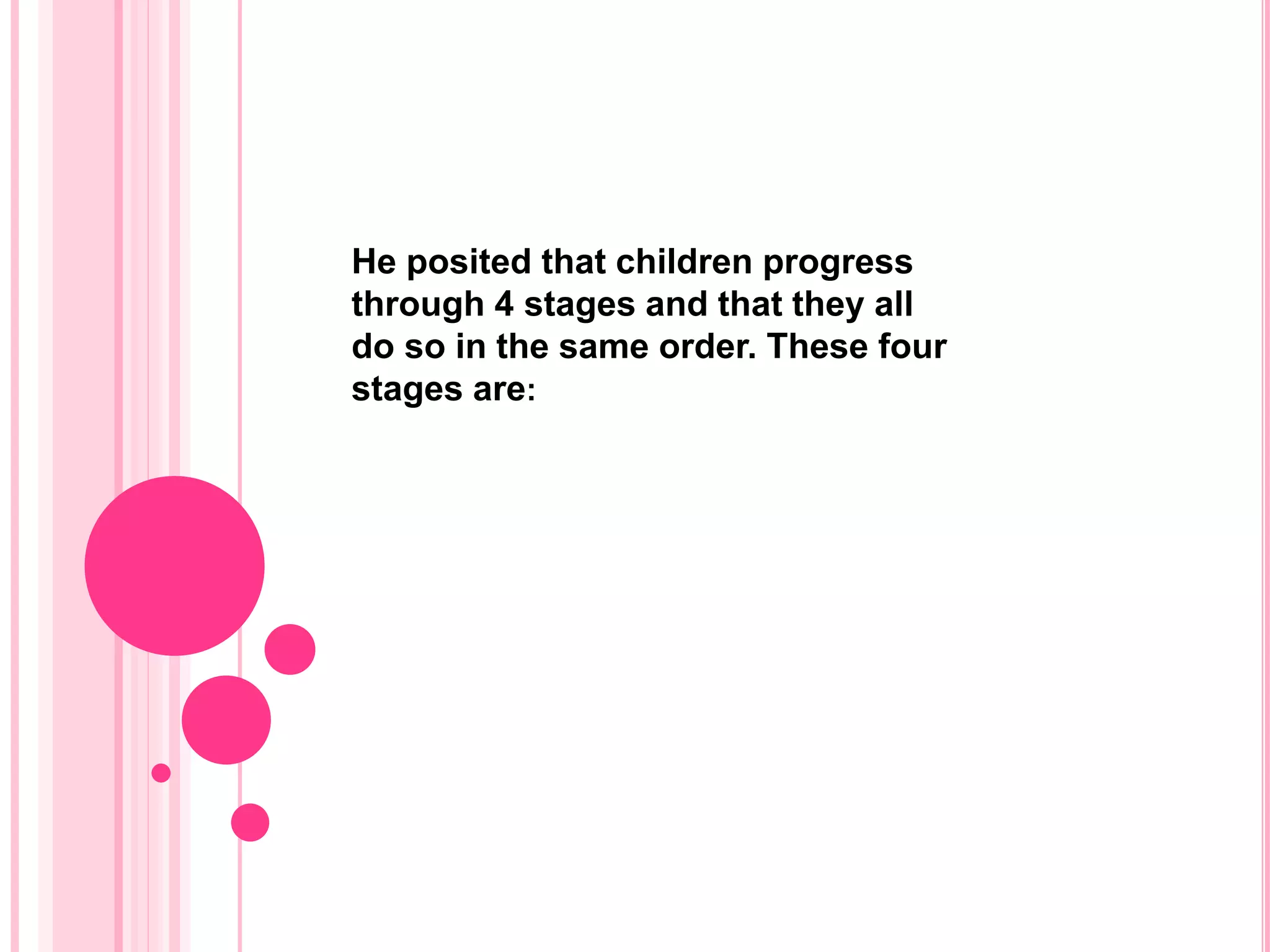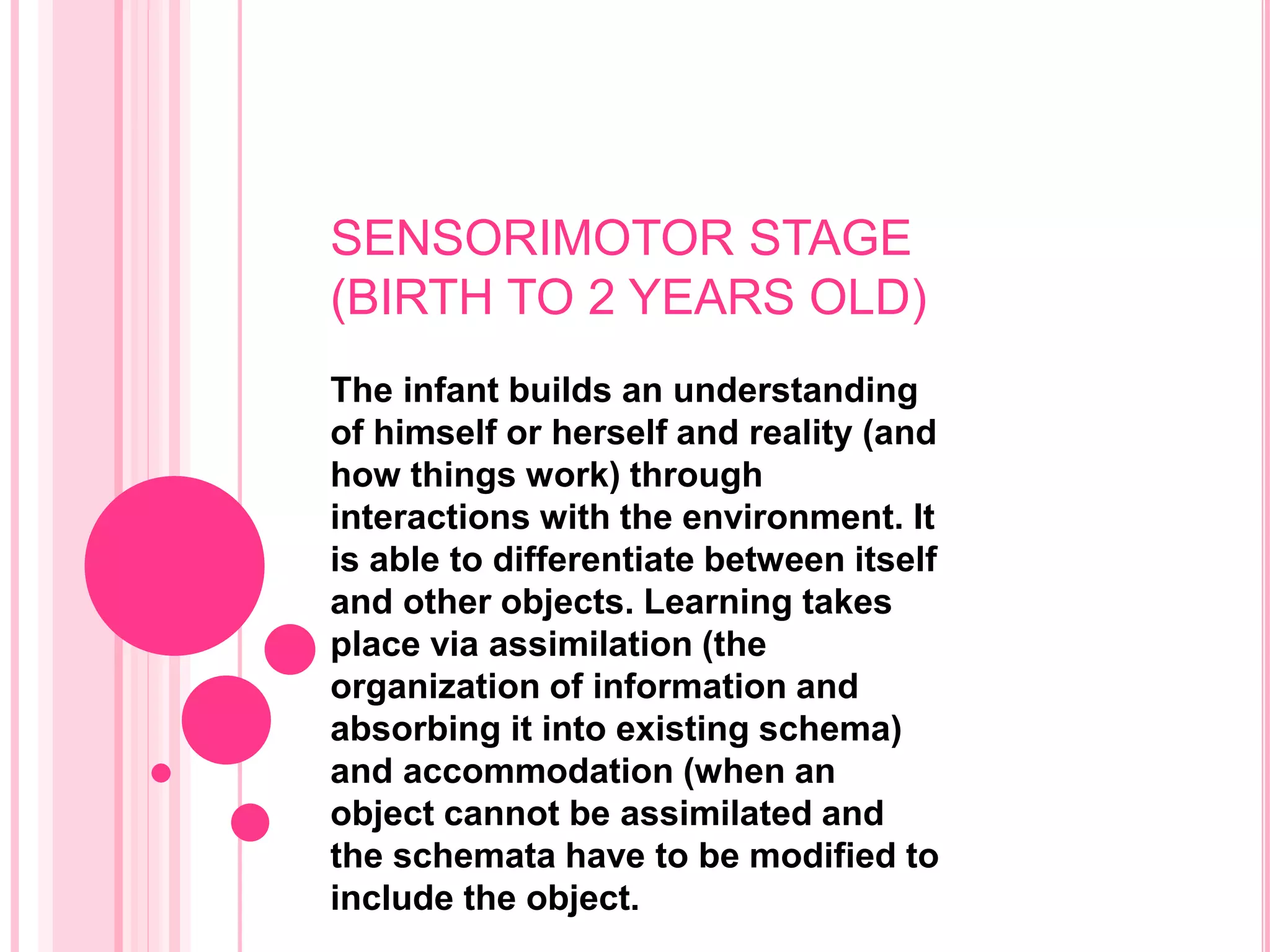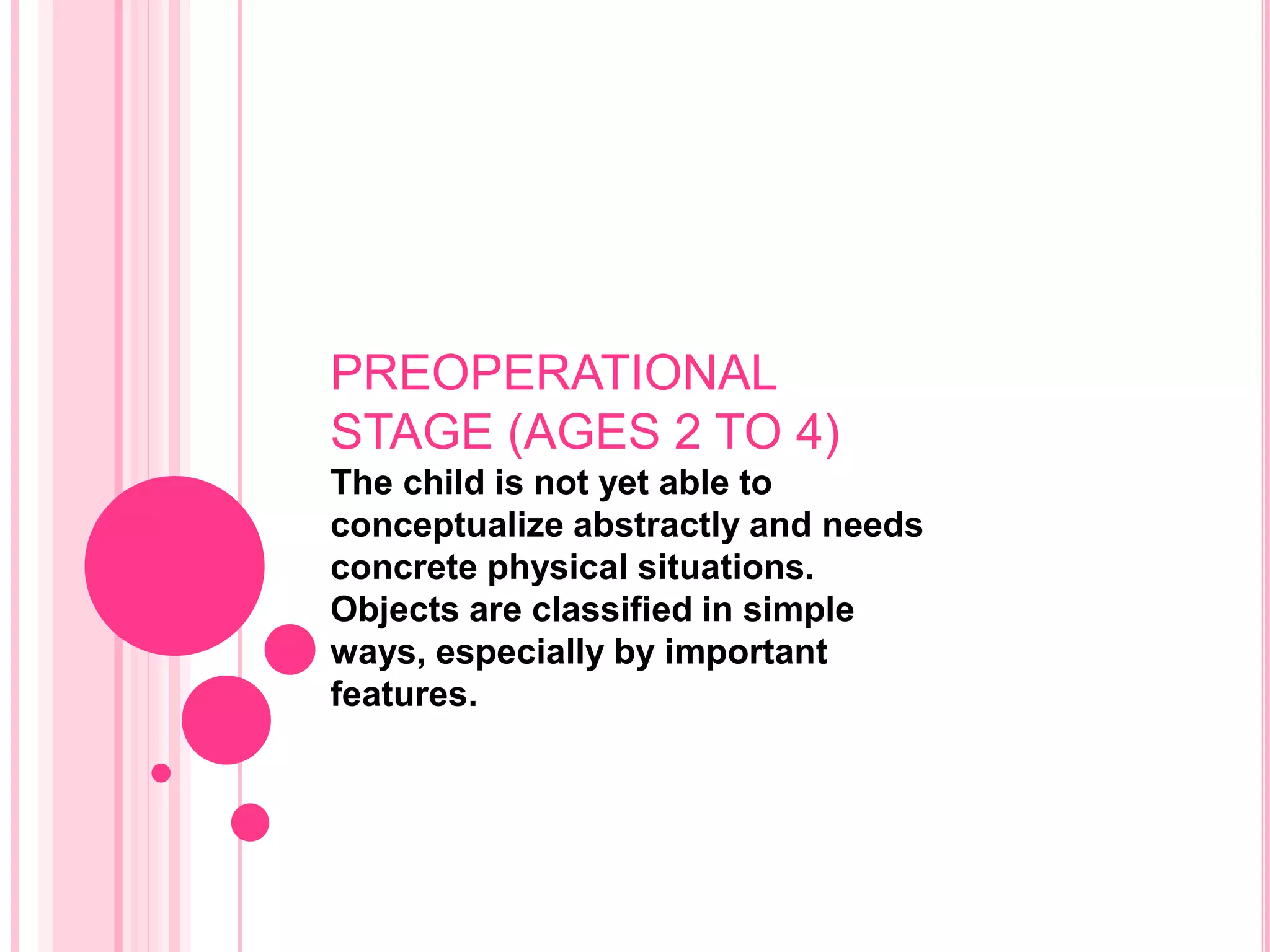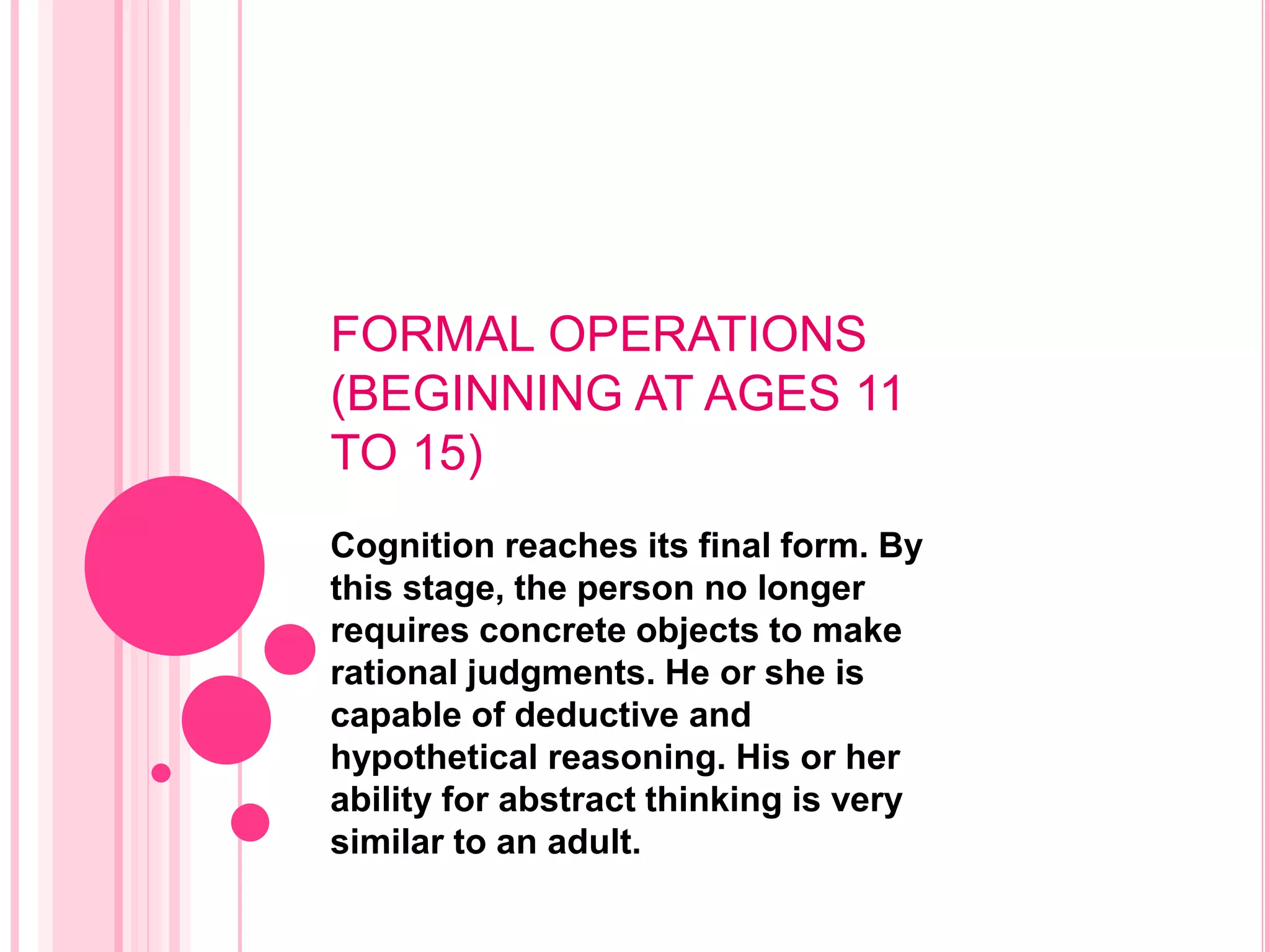Cognitive theory explores how thinking and understanding influence behavior, emphasizing processes like decision-making and memory. Jean Piaget's developmental stage theory outlines four stages of cognitive development: sensorimotor, preoperational, concrete operations, and formal operations, detailing how children's understanding evolves through interaction with their environment. This theory highlights that cognitive development results from both biological maturation and experiences, leading to the active construction of knowledge.
